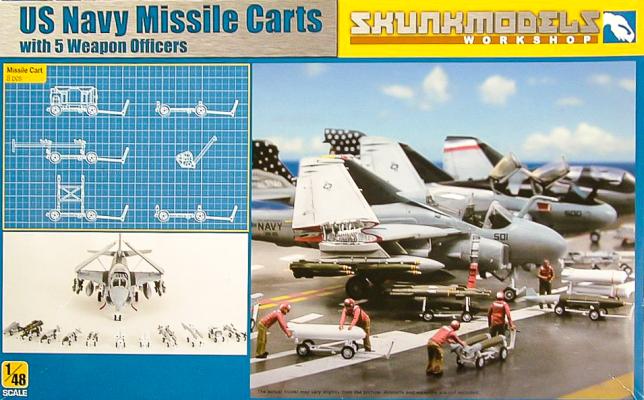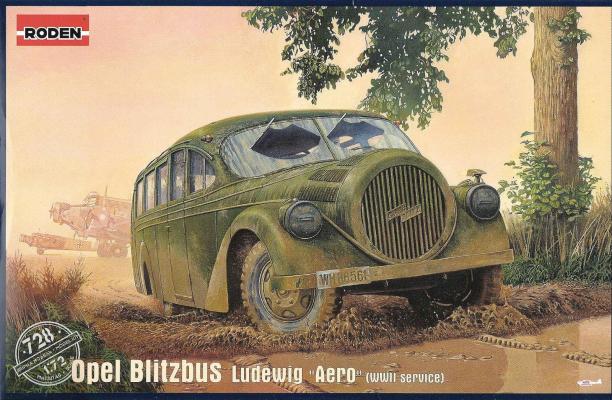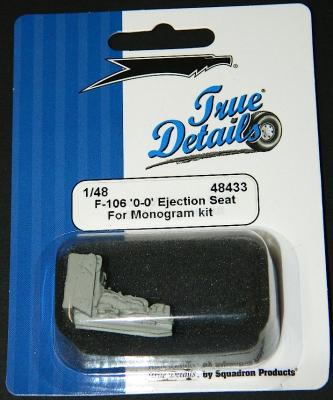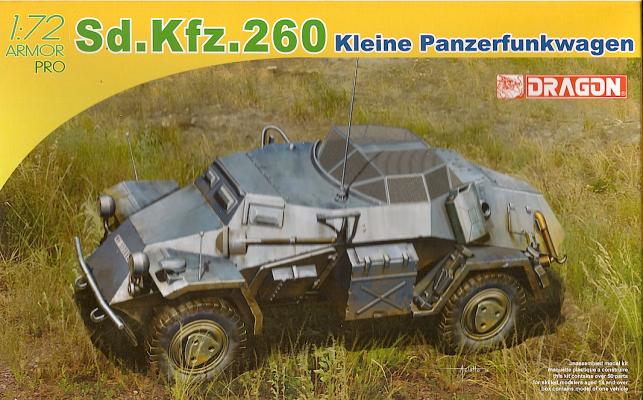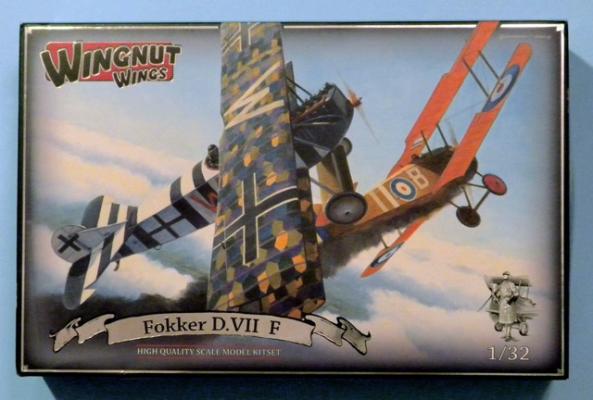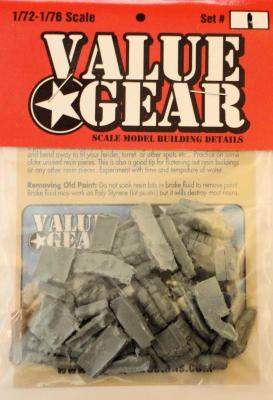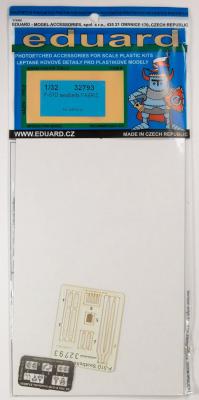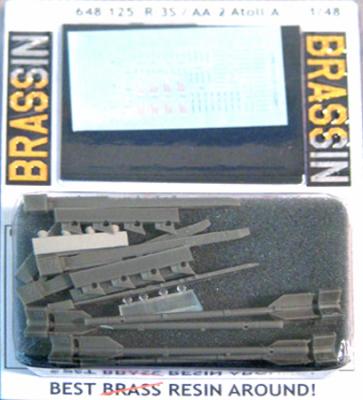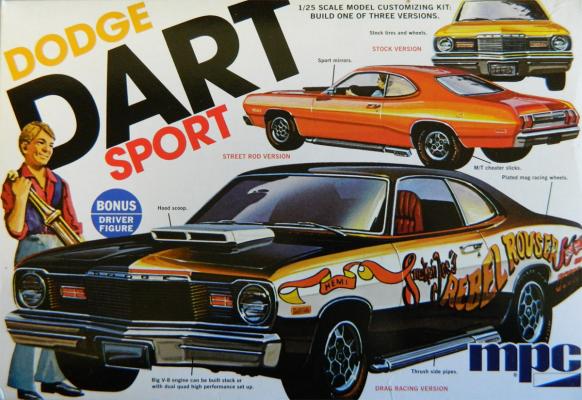Any modern flightline, including the deck of a carrier, has a collection of specialized vehicles and carts used for the movement and servicing of the aircraft. Skunk Models Workshop has been offering a steady stream of accessories for the modern jet-age modeler who may want to create a diorama or pose a few items of equipment around the aircraft for visual interest. This latest offering by Skunk Models Workshop is a collection of weapons carts used by the US Navy in the arming of aircraft prior to a mission or the de-arming of aircraft post mission. Called yellow gear due to its historical color, all of the flightline equipment is now white.
Reviews
According to the blurb on the side of the kit box, the Opel Blitzbus Ludewig “Aero” was built during the mid 1930’s. The vehicle was made on the chassis of the Opel Blitz 3-ton truck in the workshop of the Ludewig brothers. The actual vehicle’s swoopy futuristic exterior lines were paired to a luxury interior and was not only used for transportation purposes but as a propaganda tool as well. Not many were produced due to the (even then) high cost of production. This particular kit represents the militarized version used for the transport of high ranking Wehrmacht officers on the Eastern Front during WWII.
The Box
The 6’” by 10” box features the dreaded end flaps, rather than a separate top. The box top features a cool painting of an olive green colored Aero ripping down a muddy road. Painting and marking instructions appear on the bottom of the box.
Another in a long series of resin parts to make our models better from our friends at MMD/Squadron; thanks very much to you for providing IPMS USA this review item!
The venerable Monogram F-106 has been re-released several times, and is most recently in the Revell catalog. Still the only game in town in this scale, it is undoubtedly a great model of a great aircraft; it requires a bit of work for fit, but nothing that cannot be addressed by careful assembly and a bit of putty here at there. And the seat is an older version; read on.
The Sd.Kfz.260 Kleine Panzerfunkwagen is a four-wheeled light armored car used to transport and protect signal units. It had a four-man crew protected by relatively thin armor and a mesh grenade screen, and was unarmed except for the crew’s personal weapons. Approximately 500 of the 260 and the similar 261 were built and used from 1940 till the end of the war. The really significant difference in the two vehicles was in antenna and radio fit. The 260 used a dipole antenna for medium range communications and the 261 used a frame type antenna for long range radio.
The Aircraft
What hasn’t been said or printed about the Fokker D.VII? The legendary fighter is widely considered to be the best German fighter aircraft to emerge from the Great War and it was certainly the most numerous type engaged in the conflict. Nearly 3,300 Fokker D.VIIs were built by three manufacturers, (Fokker, Albatros & OAW) in the summer and autumn of 1918, and many of them were the reason a number of German pilots achieved ‘Ace’ status in the last year of the war.
From its introduction into service in May 1918, the Fokker D.VII quickly proved its vastly superior performance over most, if not all, existing Allied fighters. With a high rate of climb, higher service ceiling and outstanding handling characteristics, German pilots scored 565 victories during the month of August alone. Because of its impact, it was the only aircraft listed in the armistice terms that Germany was required to surrender to the Allies.
If you’re into small-scale armor like me, then you know that accessories like tarps, boxes and such have been hard to come by. Additionally, you usually had to order from overseas e-shops and pay an arm and a leg for the stuff, the quality of which sometimes was not that great. Well, thanks to our friends at Value Gear, that situation just got a bit better.
Packaging
The “Tarp Rolls & Crates, Set #1”, comes in a clear, zip-lock 3.5” x 5” poly bag which is stapled securely to a printed 3.75” x 7.25” fold-over card backing. The bag contains 37 individual pieces of resin molded tarp rolls and boxes - and individual means that there are no two items alike! There is also a full-color 3” x 4-5/8” tip sheet (or card) on the preparation and finishing of the resin product.
Kit Contents
In fitting with the rather lavish nature of Tamiya’s 1/32 P-51D Mustang, Eduard, known for its photo etch (PE) parts, has released a set of actual fabric seatbelts to spice up the prominent office of the bubble-topped Mustang. Tamiya’s Mustang kits feature a very solid sheet of PE that contains a multipart seatbelt assembly, but they do not match the level of detail provided by these fabric belts. (Additionally, many reviews have recommended annealing - heat treating - the Tamiya PE belts to make them easier to position in the first place, and manipulating the thick PE belts will likely cause paintwork to flake requiring a paint job “in place.”)
The MiG-21 family of aircraft is known for their air to air capability. The big part of that capability was the development of the Atoll Air to Air missile system.
The Eduard MiG-21s are some of the best kits available in plastic and that transfers over to the armament as well. But as always plastic can only do so much. That is where the resin comes in. The Brassin range of aftermarket is designed directly by Eduard to replace select parts on their kits. Because it is designed by them they will always fit perfectly.
The resin is a dark grey type with simply no blemishes or bubbles anywhere. The pour blocks are very small and are easy enough to remove. There are 28 grey resin pieces with detail that just can’t be replicated in plastic. You get four launch rails, four missiles and 16 maneuvering fins and four warhead covers. If you don’t like the covered warhead you can have the clear nose cone. There are four clear nose cones molded perfectly in clear resin.
This is another in the Scooter series of models recently released by Plus Model. The kit is a 30-series Cushman Autoglide and includes Army & Navy markings.
Kit
The Plus Model kit comes in a blister pack containing 12 resin parts, 1 clear plastic part, 4 photoetch parts, brass wire, and decal sheet. The photoetch parts are very small but add nice detail to the scooter.
Assembly
All of the parts have flash and casting blocks that must be removed. The front fork, part #2, is very fragile and I removed the flash before removing the fork from the casting block. None of the parts were deformed or broken. There is not much detail to the engine, but then it is enclosed in the shroud and not very visible.
Finishing
I washed & primed the kit, painted it with Lifecolor Olive Drab Faded, and followed with a MIG Brown Wash. The kit goes together well despite its tiny size and without any fit issues.
Engine
The kit gives you a couple of engine options. One being a Hemi and the other a 340 or 360. Both fit together pretty well once you get past the flash. I used the Hemi in my build.
Chassis
The chassis is a weird setup. Part of the exhaust is molded into the chassis and the back half is molded to the springs & differential. It also looks to be extremely out of scale. Front suspension – there is none.
Interior
The interior tub is a one piece unit with poor engraving.
Body
The kit supplies a 2 piece hood scoop. The front portion of the scoop was difficult to get positioned properly.
Round2 has been supplying some very sought after kits lately. It’s a pity that they’re reissues of old molds that have seen better days. Thank you to Round2Models and IPMS/USA for the opportunity to build and review a marvelous kit.

